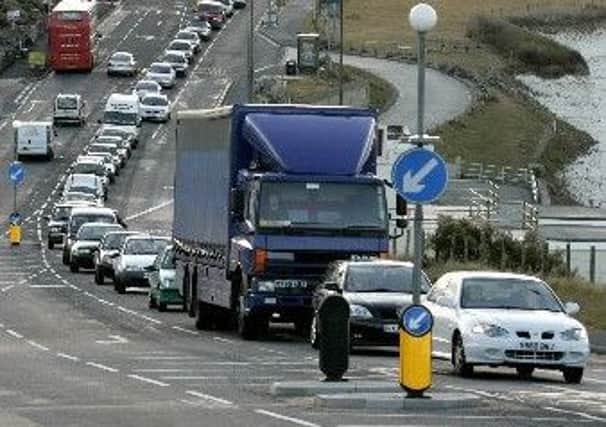Bus lanes blamed for worsening congestion through Rottingdean


The lane was created in 2009 between Brighton and Rottingdean in a council bid to shift from cars towards more sustainable transport.
However, the move, although substantially cutting down on the journey time for hundreds of bus users, has been a subject of controversy ever since.
Advertisement
Hide AdAdvertisement
Hide AdBrighton city councillor Lynda Hyde, who commutes on the road every day, said: “My personal view is that the bus lane increases the congestion on the A259, and if it was taken out I would be happy.”
She said the decision to cut down the two-lane road to one, making way for the bus lane, was based on incorrect traffic data. Cllr Hyde is not the only person to criticise traffic data used to make decisions about the A259.
SAFE Rottingdean and other local focus groups have launched a petition calling on Brighton and Hove City Council, East Sussex County Council and Lewes District Council to come up with solutions to the worsening daily gridlock on the A259 by using current traffic data.
Nigel Smith, chairman of Safe Rottingdean, said: “The A259 is absolutely clogged. It is solid traffic all the way around and we want something to be done about that.”
Advertisement
Hide AdAdvertisement
Hide AdMr Smith claims the hundreds of new houses planned in the area will exacerbate the already unacceptable levels of congestion on the A259.
The petition, signed by more than 1,250 people, will be presented to the city council to be debated at its next meeting next Thursday.
The South Coast Road goes through two Air Quality Management Areas (AQMA) – Newhaven and Rottingdean – where the contribution of cars and vans to nitrogen dioxide pollution is more substantial than anywhere else in the area, figures from the council’s Air Quality Action Plan show.
According to the plan, poor air quality can cause health problems during pregnancy can slow lung development and contribute to low birth weight.
Advertisement
Hide AdAdvertisement
Hide AdDr Kirsty Smallbone, who is monitoring air quality at Rottingdean High Street with students from Brighton University, said: “Part of the action plan should be to look at the congestion and implement measures to enable people to choose alternative, cheaper transport.”
Such measures, Dr Smallbone said, could include building cycle lanes and park-and-rides, encouraging the use of electric cars, introducing congestion zones and using faster, better bus lanes.